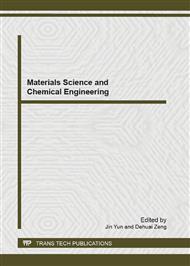p.194
p.200
p.207
p.212
p.217
p.223
p.228
p.234
p.238
Effect of Coal Moisture on Emissions in Fixed Bed Combustion Appliances
Abstract:
The water associated with coal is an important element in both the formation and utilization of coal deposit. The first stage of coal formation is the accumulation of vagetable matter in swamps. This is followed by consolidation and partial decay of the organic matter to form peat, which can have moisture contents of 80-90% in situ. Low-rank coals such as brown coals and lignite, which are formed in the next stage of coalification, can have moisture contents in range 30-70%. Hard or bituminous coals, which are formed in the final stages of coalification, have relatively low moisture contents of 10% or less. Thus the elimination of water is an integral part of the coalification process and it follows that the moisture content of coal is one of its most characteristic and important properties. Moisture is one of the most basic and important parameter defining coal structure but the data reported on its effect on combustion efficiency and emissions is rather limited. In this study we report effect of coal moisture on CO, NOx, SO2 and particulate emissions in a automatic-loaded boiler combustion. In this study, effects of moisture on particulate emissions of %37-38 moisture orijinal Yeniköy Ağaçlı (Y.A.), %24, %21, %17, %15 ve %10 moisture Yeniköy Ağaçlı, %6 moisture South African coal, %22 misture mixture coal (S.African ve Y.Ağaçlı) ve %13 moisture Soma are investigated in automatic-loaded boiler.
Info:
Periodical:
Pages:
217-222
Citation:
Online since:
May 2013
Authors:
Price:
Сopyright:
© 2013 Trans Tech Publications Ltd. All Rights Reserved
Share:
Citation:


